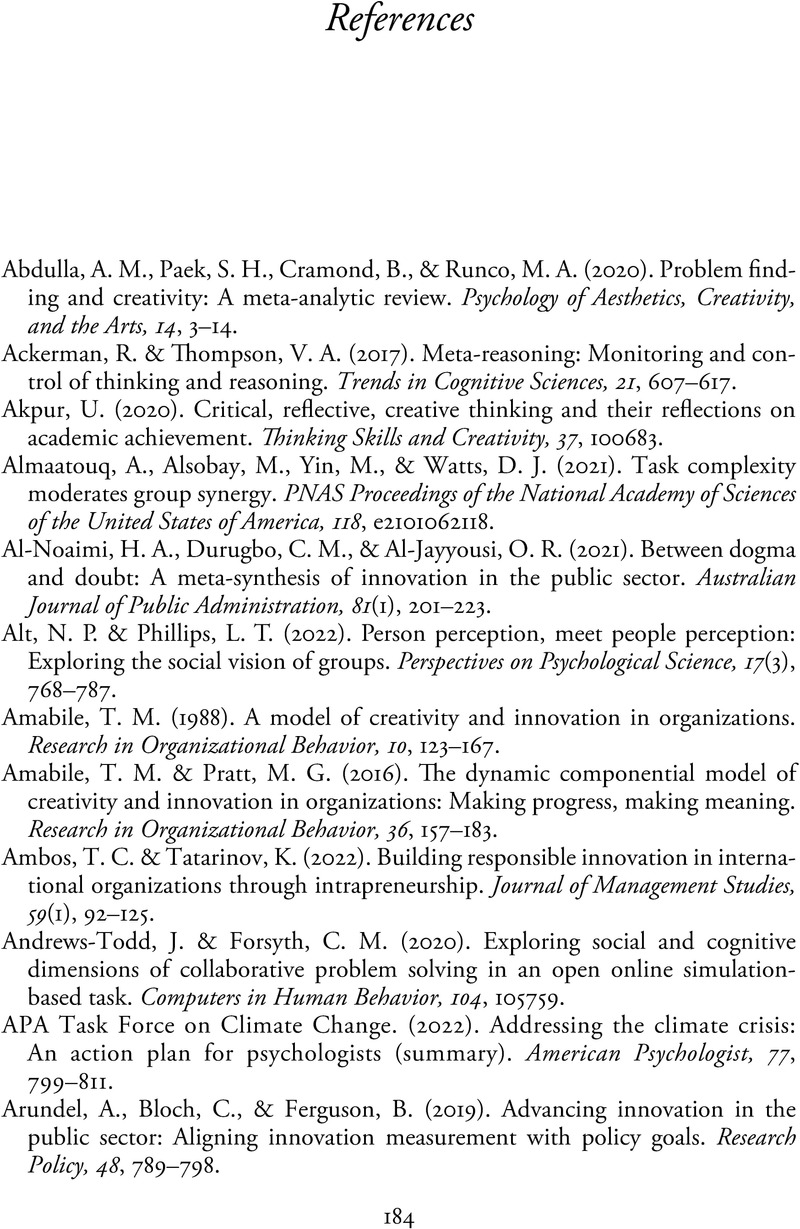References
Published online by Cambridge University Press: 17 August 2023
Summary

- Type
- Chapter
- Information
- Encouraging InnovationCognition, Education, and Implementation, pp. 184 - 199Publisher: Cambridge University PressPrint publication year: 2023



